
Global Economic Prospects
 Setting the Stage to Accelerate Growth
Setting the Stage to Accelerate Growth

The global economy is growing too slowly for lasting development. Even as the global economy stabilizes, emerging market and developing economies (EMDEs) are projected to have the weakest long-term growth outlook since the start of this century. Most low-income (LICs) countries are not on course to graduate to middle-income status by 2050. This topic page brings together the main policy messages from recent World Bank research on how policy makers can boost investment and growth. It primarily draws on the World Bank Global Economic Prospects reports. In addition to macroeconomic projections, these reports offer analysis and policy advice for countries to create favorable external environments, ensure macroeconomic stability, reduce structural constrains, tackle climate change, and boost long-term growth and development.
Although individual policy interventions play a role in improving the prospects for increased investment and growth, the research shows that what really makes a difference is a carefully sequenced, country-specific set of macroeconomic and structural policies. Meanwhile, at the global level, policies should focus on strengthening trade relationships, supporting green and digital transitions, delivering debt relief, and improving climate adaptation.
Download Report Executive Summary Key Policy Messages
Key Policy Messages
These are major themes and messages from the Global Economic Prospects reports and related macroeconomic research by the World Bank. Click on each card to learn more and access related publications.
Countries need to prioritize reforms to accelerate investment and deepen trade ties
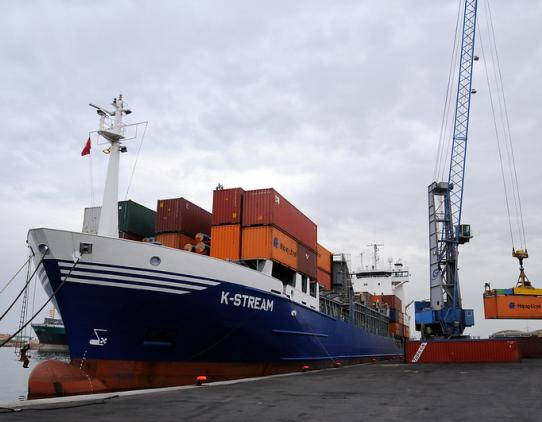
Countries need to prioritize reforms to accelerate investment and deepen trade ties
Emerging market and developing economies can accelerate growth by adopting reforms to attract investment and deepen trade ties with other developing economies. To achieve this, countries must:
- Modernize infrastructure.
- Improve institutional quality and the business environment.
- Invest in human capital and protect the vulnerable.
- Deepen cross-border cooperation.
- Add buffers to maintain macroeconomic stability.
- Speed up the climate transition.
Public investment and sound fiscal policy are powerful ways to accelerate private investment and promote economic growth
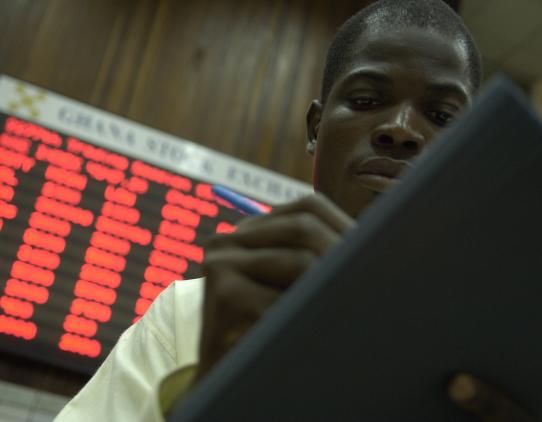
Public investment and sound fiscal policy are powerful ways to accelerate private investment and promote economic growth
Since the global financial crisis in 2009, public investment growth in developing economies has halved. Scaling up public investment by 1% of GDP can increase the level of output by up to 1.6% over the medium term, provided countries have ample fiscal space and efficient public spending practices. To enhance economic prospects, countries should additionally:
- Cut deficits—global cooperation on debt relief is also needed.
- Enhance revenue mobilization by reforming tax administrations and enlarging tax bases.
- Adopt expenditure measures, such as reprioritizing spending and eliminating costly and inefficient subsidies.
Governments can use monetary policy to help stabilize prices and make it more attractive to invest
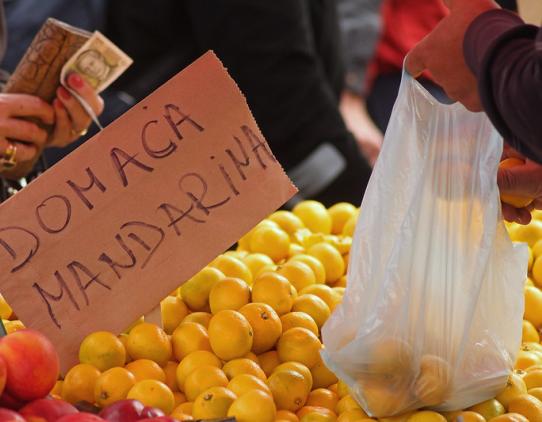
Governments can use monetary policy to help stabilize prices and make it more attractive to invest
Persistent inflation risks underscore the need for monetary policies to remain focused on price stability. Sound monetary policy can help create an environment in which investment is more likely to surge. Countries should:
- Communicate a steadfast commitment to price stability.
- Ensure central bank independence.
- Enhance financial supervision and strengthen macroprudential policies to mitigate financial stability risks.
Structural reforms can help lay the foundation for increased investment and growth
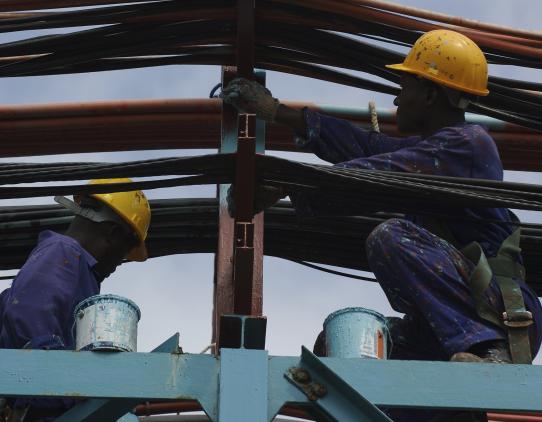
Structural reforms can help lay the foundation for increased investment and growth
Creating the conditions for a sustained expansion in investment and lasting improvements in longer-term growth hinges on success in implementing well-designed and comprehensive policy packages to foster stability, enhance resilience, and capitalize on their potential. Investment accelerations are often preceded or accompanied by structural reforms, such as:
- Reforms to promote trade, such as lowering tariffs.
- Easing restrictions on capital flows, while mitigating risks.
- Market-oriented reforms, e.g., reduced barriers to firm entry.
- Investing in assets such as infrastructure and human capital.
- Introducing carbon pricing and reducing fossil fuel subsidies.
Investment accelerations can help countries close development gaps and support inclusive growth
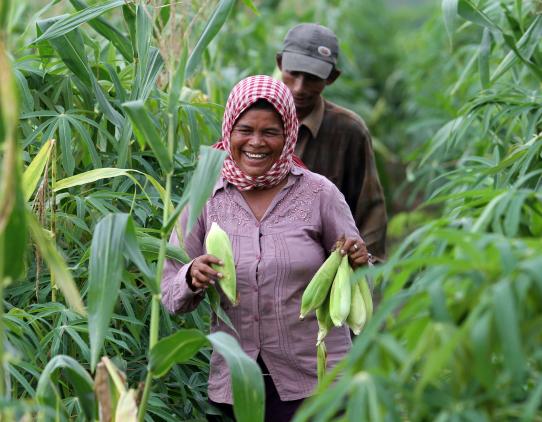
Investment accelerations can help countries close development gaps and support inclusive growth
Investment accelerations have tended to coincide with better development outcomes, including faster poverty reduction, lower inequality, and improved access to infrastructure. To make growth more inclusive, including by reducing food insecurity and gender gaps, governments should:
- Enhance financial support, broaden access to finance, and boost technical knowledge for farmers.
- Encourage investment in green technology/production.
- Invest in areas like childcare, safe transport, and job re-entry programs, and address restrictive social norms, to encourage female labor force participation.
Strong institutions are key to attracting investment

Strong institutions are key to attracting investment
In countries with better institutions (such as well-functioning and impartial legal systems) the likelihood of initiating an investment acceleration is higher than in those with weaker institutions. Policymakers can strengthen institutions by:
- Defining and protecting property rights.
- Increasing the independence of the judiciary and strengthening the rule of law.
- Bolstering contract enforcement.
- Improving and unifying regulatory and institutional structures.
- Increasing transparency.
 Multimedia
Multimedia
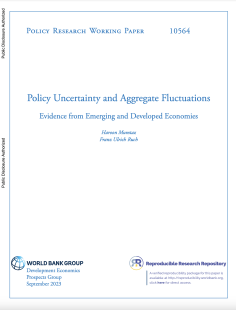
Policy Research Working Papers
Policy Uncertainty and Aggregate Fluctuations: Evidence from Emerging and Developed Economies
This paper identifies two types of policy uncertainty measures—government spending and real interest rates—and their impact on macroeconomic activity in 54 advanced, emerging, and developing economies. Policy uncertainty is defined as the inability to predict policy moves, that is, the conditional volatility of policy shocks.
Read more
Events
Poverty & Applied Microeconomics Seminar Series
The Poverty & Applied Microeconomics Seminar Series is a weekly series hosted by the World Bank's research department. The series invites leading researchers in applied microeconomics from the fields of poverty, human development, agriculture, political economy, behavioral economics, private sector development, and a range of other fields to present the results of their most recent research in a seminar format.
Read more
Events
Macroeconomics, Trade, and Finance Seminars
The Macroeconomics, Trade, and Finance Seminar Series is a weekly series hosted by the World Bank's research department. The series invites leading researchers from the fields of macroeconomics, growth, trade, international integration and finance to present the results of their recent research in a seminar format.
Read more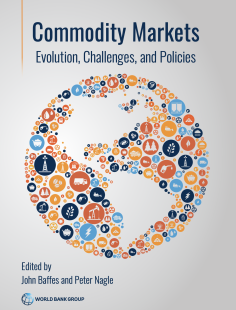
Publications
Commodity Markets: Evolution, Challenges, and Policies
This study offers the first comprehensive analysis—encompassing all major commodities—of how these markets evolved over the past 100 years and the directions they are likely to take over the next 30 years.
Read more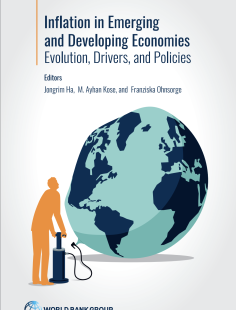
Publications
Inflation in Emerging and Developing Economies
Emerging market and developing economies, like advanced economies, have experienced a remarkable decline in inflation over the past half-century. Yet, research into this development has focused almost exclusively on advanced economies. Inflation in Emerging and Developing Economies fills that gap, providing the first comprehensive and systematic analysis of inflation in emerging market and developing economies.
Read more